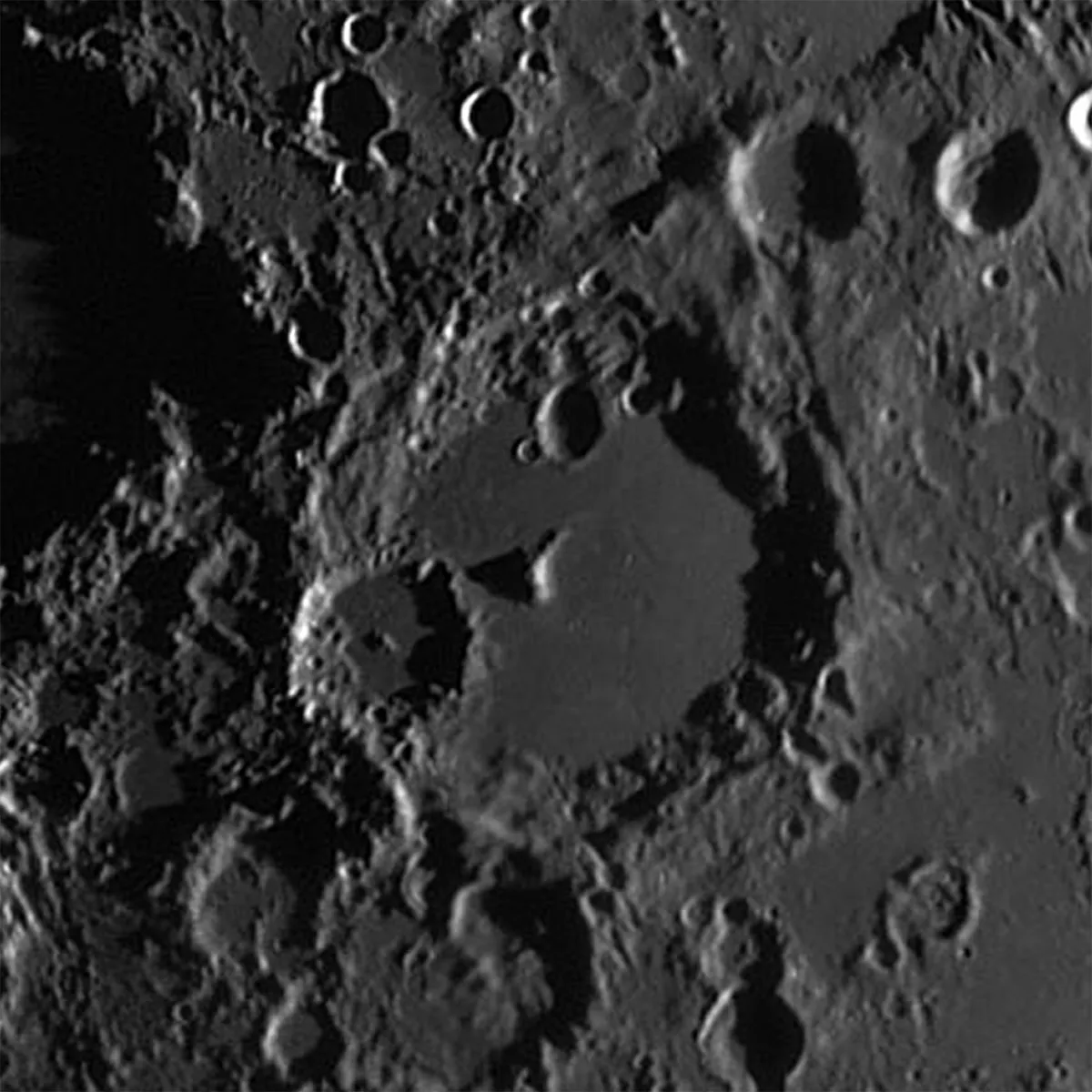The Europa Clipper spacecraft has captured an image of Mars in infrared while making its way across the Solar System to explore Jupiter's icy moon Europa.
The spacecraft's view of Mars came during a flyby of the Red Planet on 1 March 2025, that was used to calibrate its infrared imaging instrument and carry out other science tests.
More about Europa Clipper

Europa Clipper is tasked with an important mission, and that's investigating Europa, a place where scientists are looking for evidence of life in the Solar System, due to the liquid ocean underneath its icy crust.

A face on Mars
Have you ever noticed that some inanimate objects appear as though they have a face?
The phenomenon is known as pareidolia, and is thought to be an evolutionary trait developed to help humans spot potential predators.
This image of Mars captured by Europa Clipper certainly looks like a blurry face peeking out of the dark, with one huge eye on the left and a smaller eye on the right.
A similar effect is produced by observing Crater Albategnius on the Moon.
Of course, the effect is just a chance alignment of features on Mars seen by Europa Clipper, which our brain instinctively recognises as a face.
In the grayscale image, bright regions are warm, with temperatures of about 0°C (32°F), while darker areas are colder.
The darkest region at the top of the image is Europa's northern polar cap, which is about -125°C (-190°F)

Why Mars?
So why did Europa Clipper, a spacecraft destined for Jupiter, photograph Mars?
The image was captured on 1 March 2025 as Europa Clipper flew 550 miles (884km) above the surface of Mars.
The spacecraft was using the planet's gravitational pull to reshape its trajectory, in a move called a 'gravity assist'.
This is a well-used technique by space mission scientists.
When you're navigating a spacecraft across the Solar System, fuel preservation is key.
At the same time, it's both difficult and fuel-draining to brake effectively in space.
So scientists use the gravity of other planets as a means to slow down, speed up or change direction.
Mission scientists say Europa Clipper's gravity assist at Mars will get it to Jupiter faster than if it made a beeline for the gas giant.

But there was another opportunity afforded by the Mars flyby, and that's testing Europa Clipper's infrared camera, called the Europa Thermal Imaging System (E-THEMIS).
For about 18 minutes during the Mars flyby on 1 March 2025, Europa Clipper's E-THEMIS captured one image of the Red Planet per second.
This amounted to over 1,000 grayscale pictures that were transmitted back to Earth on 5 May.
Mission scientists compiled the images and applied colour to show the distribution of heat on Mars.
Warm areas are depicted in red, colder areas are blue.

"We wanted no surprises in these new images," says Arizona State University’s Phil Christensen, principal investigator of E-THEMIS.
"The goal was to capture imagery of a planetary body we know extraordinarily well and make sure the dataset looks exactly the way it should, based on 20 years of instruments documenting Mars.”
Europa Clipper also used the Mars flyby to test the components of its radar instrument in unison for the first time.
And the science team used the flyby to ensure the spacecraft’s telecommunication equipment will be able to conduct gravity experiments at Europa.

Onwards to Europa
Europa Clipper launched from NASA’s Kennedy Space Center in Florida on 14 October 2024 and is making a 2.9 billion km (1.8 billion-mile) journey to Jupiter.
Its next gravity assist will be at Earth in 2026.
Europa Clipper will arrive at Jupiter in 2030 and will spend a year in orbit around the planet, then conduct 49 flybys of icy moon Europa to investigate whether it could host life.
Like Saturn's moon Enceladus, Europa has a liquid subsurface ocean beneath its icy crust, and there is evidence of plumes erupting from below Europa's surface.

Because liquid water is a prerequisite for life on Earth as we know it, that makes Europa one of the most promising places to look for signs of life in our Solar System.
In 2023, scientists announced that the James Webb Space Telescope had detected carbon on Europa, further boosting the promise that it might be able to support life.
Europa Clipper will use thermal imaging to map temperatures on Europa to see how active the surface is.
Infrared imaging can show how much heat is emitted from the moon and tell scientists where the subsurface ocean comes closest to the surface.

Planetary scientists say Europa is covered by ridges and fractures that could be caused by ocean convection pulling apart its icy crust.
"We want to measure the temperature of those features," says Christensen.
"If Europa is a really active place, those fractures will be warmer than the surrounding ice where the ocean comes close to the surface.
"Or if water erupted onto the surface hundreds to thousands of years ago, then those surfaces could still be relatively warm."
Find out more via NASA's Europa Clipper website
